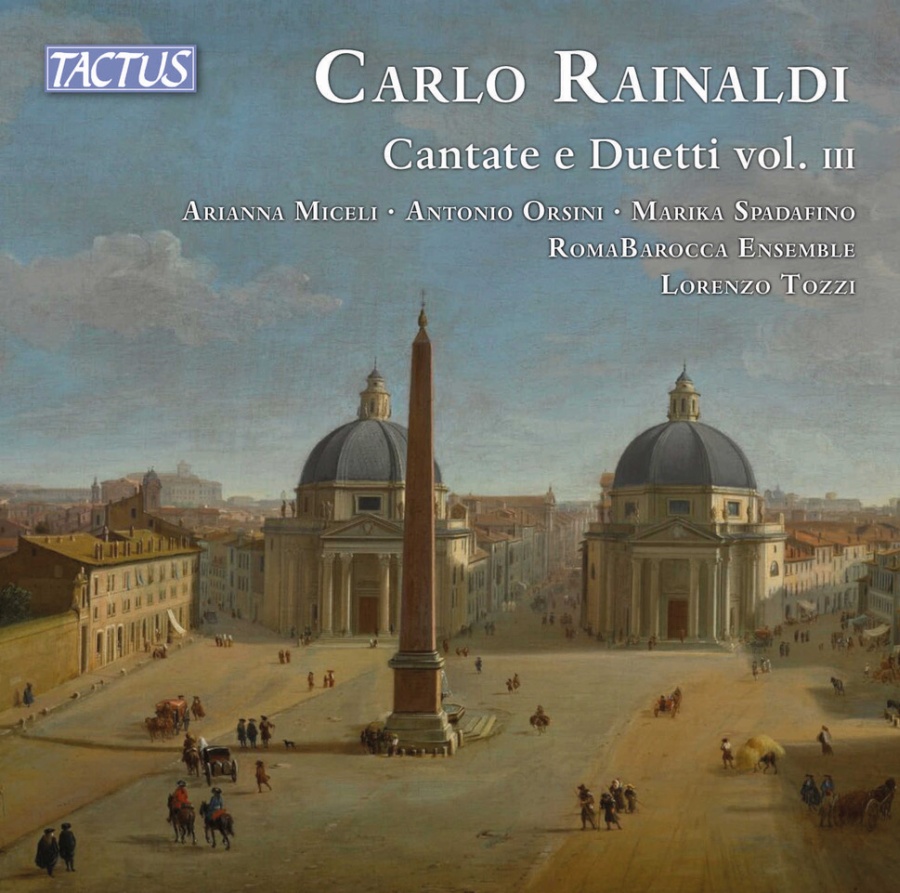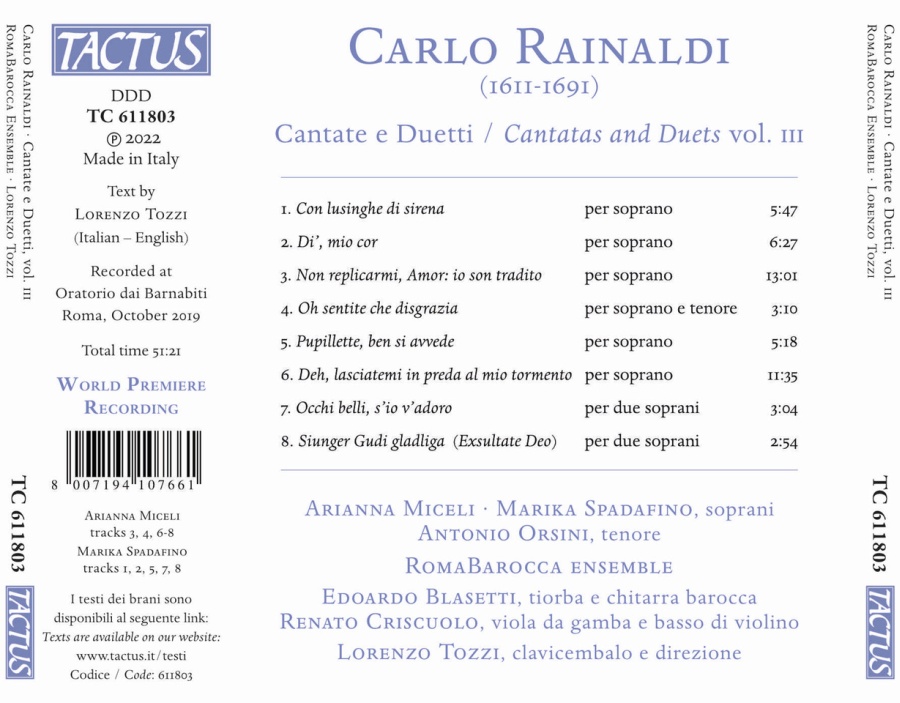
kompozytor
Rainaldi, Carlo
tytuł
Rainaldi: Cantatas and Duets vol. III
wykonawcy
Roma Barocca Ensemble;
Tozzi, Lorenzo
Tozzi, Lorenzo
nr katalogowy
TC 611803
opis
Art historians unanimously regard Carlo Rainaldi as the most important architect of seventeenth-century Baroque Rome after Bernini, Borromini and Pietro da Cortona. He was born in Rome, on 4 May 1611, to Girolama Verovio and Girolamo Rainaldi, a Roman architect, and received his education at the Collegio Romano, for music, and at the Sapienza, for architecture. He was active in all the major Roman constructions of that period, ranging from S. Agnese in Agone, in Piazza Navona, to the two twin churches of Piazza del Popolo, from S. Maria in Campitelli to the façade of S. Andrea della Valle, from S. Maria in Via to the apse of S. Maria Maggiore, not to mention Palazzo Salviati in the Corso, the loggia of Palazzo Borghese and the sepulchral monument to Clement ix in S. Maria Maggiore.We should also add to this list a number of chapels, sepulchral monuments, altars, triumphal arches and decorations for papal transits and processions. While as an architect Rainaldi has aroused the interest of art historians, he is not well-known yet as a musician. This third cd dedicated to the composer's chamber vocal production (see tc 611801 and tc 611802), edited by Lorenzo Tozzi at the helm of the RomaBarocca Ensemble, contributes to the necessary rediscovery of this aspect; the refined Roman cantata of the seventeenth century that sees its standard bearers in Giacomo Carissimi and Luigi Rossi, finds another and unexpected protagonist in the architect Rainaldi.
nośnik
CD
gatunek
Muzyka klasyczna
producent
Tactus
data wydania
31-03-2022
EAN / kod kreskowy
8007194107661

(Produkt nie został jeszcze oceniony)
cena 61,00 zł
lubProdukt dostepny w niewielkiej ilości.
Wysyłka w ciągu 3 dni roboczych
Darmowa wysyłka dla zamówień powyżej 300 zł!
Darmowy kurier dla zamówień powyżej 500 zł!
sprawdź koszty wysyłki
















